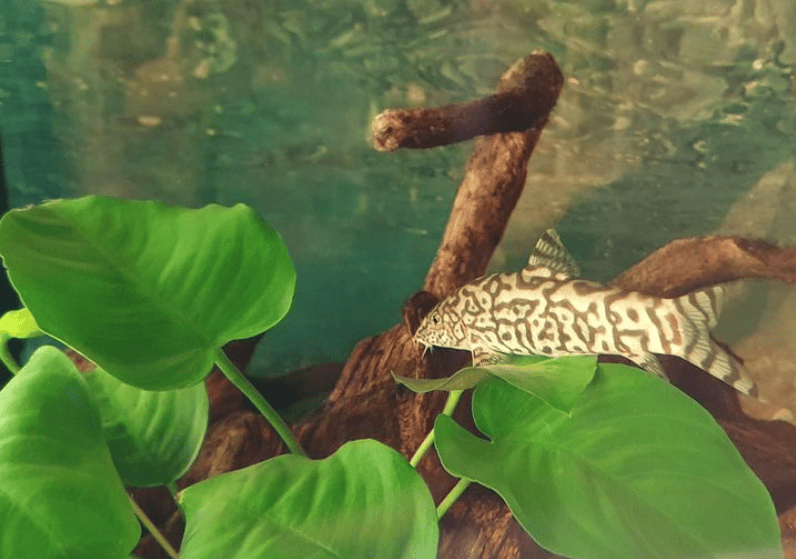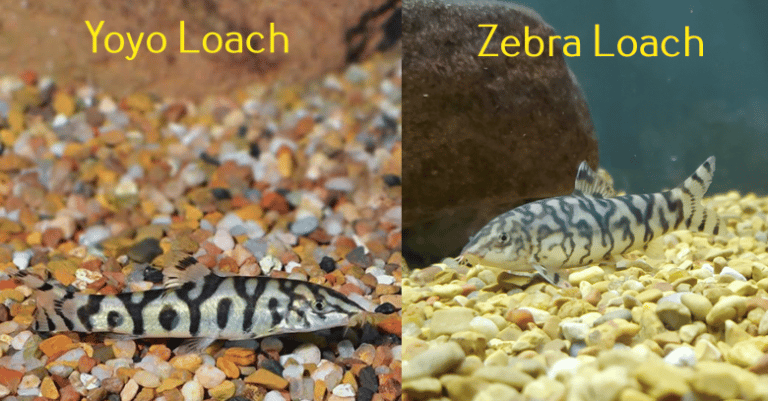Although omnivorous, yoyo loaches prefer a carnivorous diet. They love eating snails, bloodworms, and shrimp. These foods are good sources of proteins and fats, which can make yoyo loaches significantly gain body mass. Therefore, a yoyo loach’s fat belly should not be a cause for concern.
A yoyo loach may develop a fat belly due to overfeeding on protein-rich foods and old age. A female yoyo loach carrying eggs will also have a bulging belly, although it’s rare for this fish to breed in a home setup.
What Causes a Fat Belly in Yoyo Loaches
Having a yoyo loach with a fat belly should not be a cause for concern. It should be normal if your yoyo loach eats snails, shrimps, and other protein-laden meals. Yoyo loaches are omnivorous fish types that thrive on foods derived from plants and animals. A fat belly simply means plenty of proteins and fats in their diet.
Cutting on food supply may appear to solve this problem, but it is usually not a good idea. Yoyo loach fat belly might result from other factors like old age. Older yoyo loaches are usually fat and rounder as compared to young ones. This is also attributed to the fact that they are less active.
A female yoyo loach with a fat belly might be carrying eggs. Although rare to find them breeding in aquarium setups, there are a few exceptional cases. A pregnant yoyo loach will have a thicker, bloated, and rounder belly that is faded compared to the rest of the body.
Egg-carrying yoyo loach craves more proteins; this is when it will even feed more on those shrimps and snails. The diet strengthens their body, enhances egg formation, and keeps them healthy.
Fluids are likely to accumulate in the fish’s body cavities, leading to a condition called dropsy. It is a terminal condition that is curable at the early stages. Affected fish will have a swollen abdomen and should be isolated in a hospital tank where antibacterial treatments are offered.
It is critical to understand yoyo loaches’ feeding habits, dietary needs, and breeding if you plan to keep them. Beginner aquarists may have great difficulty in keeping yoyo loaches, and there is a need to seek help from professional or experienced aquarists.

Points to note about male and female yoyo loach sizes
Male and female yoyo loach are somehow different in their body sizes. When ready to breed, female yoyo loaches will get swollen with eggs, making them appear rounded and fuller. The males are usually slender for most of their lives, and their role is to fertilize the laid eggs.
A bulge in a male yoyo is most likely attributable to overfeeding on proteins, bloating, or prevailing health conditions. The female ones may share the same reasons in addition to being pregnant.
Pregnant vs. fat belly yoyo loach
Yoyo loach does not become pregnant but gets swollen with eggs. When breeding, the female will release eggs which are then externally fertilized to hatch by the male. It is important to know whether your fish is pregnant or simply fat.
The following are key differences between a fat belly yoyo loach and a pregnant one:
| Pregnant Yoyo Loach | Fat Belly Yoyo Loach |
| Only female yoyo loach gets swollen with eggs and appears to have a fat belly. | Both male and female yoyo loaches can have a fat belly resulting from overeating or other conditions. |
| Egg-bearing yoyo loach will remain active, moving from one point to another. | Fat-bellied yoyo loaches usually become inactive, with slow movements that result from heavy body weight. |
| Yoyo loach swollen with eggs will eventually resume its body shape once the breeding season has ended. | Fat-bellied yoyo loach remains rounder throughout the year. |
| The breeding condition is not a health risk to the fish. | A fat belly can lead to obesity, a health risk for fish. |
Why overweight yoyo loach lies one side
It is common to find yoyo loaches lying on the side. According to researchers, lying on the side is one of the ways that yoyo loaches sleep. However, a yoyo with a fat belly lying on its side may be a cause for worry.
It is critical to look out for any signs of sickness, particularly dropsy and worm infestations. Yoyo loaches with health complications are likely to become inactive. It is critical to confirm if the fins are still flapping as the fish may also be dead. There are quite many reasons why fish die.
A dead yoyo loach will remain submerged until the gases produced by the bacteria acting on its decomposing body fill all the body cavities to make it buoyant enough to float. If the fish is lying on its side while floating on the surface, it likely has died.





